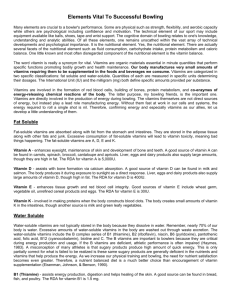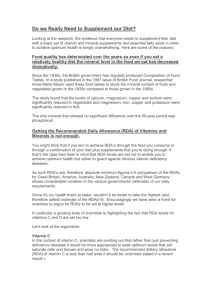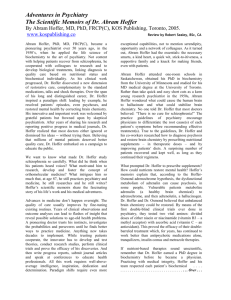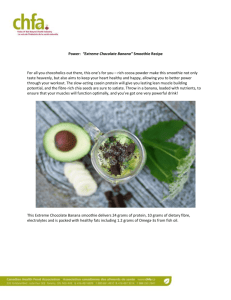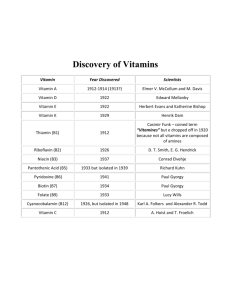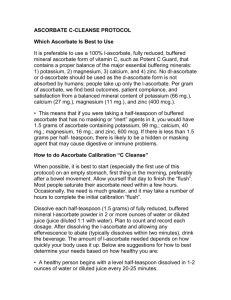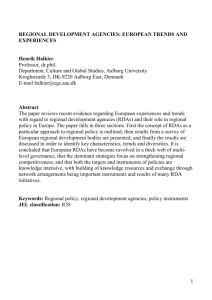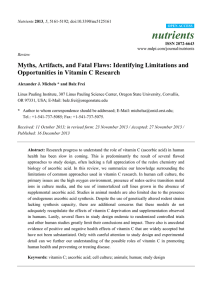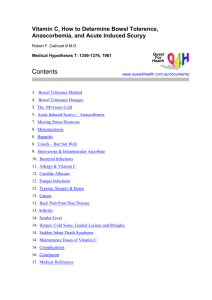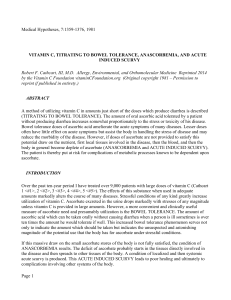File
advertisement
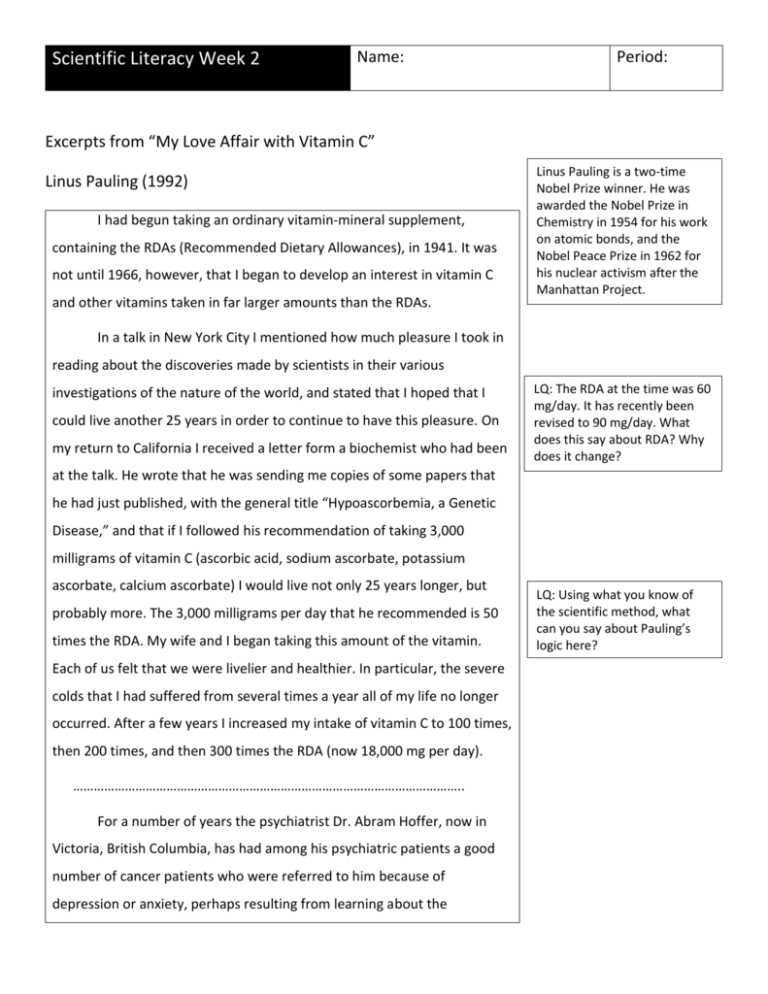
Scientific Literacy Week 2 Name: Period: Excerpts from “My Love Affair with Vitamin C” Linus Pauling (1992) I had begun taking an ordinary vitamin-mineral supplement, containing the RDAs (Recommended Dietary Allowances), in 1941. It was not until 1966, however, that I began to develop an interest in vitamin C and other vitamins taken in far larger amounts than the RDAs. Linus Pauling is a two-time Nobel Prize winner. He was awarded the Nobel Prize in Chemistry in 1954 for his work on atomic bonds, and the Nobel Peace Prize in 1962 for his nuclear activism after the Manhattan Project. In a talk in New York City I mentioned how much pleasure I took in reading about the discoveries made by scientists in their various investigations of the nature of the world, and stated that I hoped that I could live another 25 years in order to continue to have this pleasure. On my return to California I received a letter form a biochemist who had been LQ: The RDA at the time was 60 mg/day. It has recently been revised to 90 mg/day. What does this say about RDA? Why does it change? at the talk. He wrote that he was sending me copies of some papers that he had just published, with the general title “Hypoascorbemia, a Genetic Disease,” and that if I followed his recommendation of taking 3,000 milligrams of vitamin C (ascorbic acid, sodium ascorbate, potassium ascorbate, calcium ascorbate) I would live not only 25 years longer, but probably more. The 3,000 milligrams per day that he recommended is 50 times the RDA. My wife and I began taking this amount of the vitamin. Each of us felt that we were livelier and healthier. In particular, the severe colds that I had suffered from several times a year all of my life no longer occurred. After a few years I increased my intake of vitamin C to 100 times, then 200 times, and then 300 times the RDA (now 18,000 mg per day). ………………………………………………………………………………………………….. For a number of years the psychiatrist Dr. Abram Hoffer, now in Victoria, British Columbia, has had among his psychiatric patients a good number of cancer patients who were referred to him because of depression or anxiety, perhaps resulting from learning about the LQ: Using what you know of the scientific method, what can you say about Pauling’s logic here? seriousness of their disease. For many years Dr. Hoffer has prescribed for his psychiatric patients large amounts of vitamin C, usually 12 grams per day, a good amount of niacin, 1.5 or 3 grams per day, and mega-amounts of several other vitamins and certain minerals. Some of his cancer patients did not follow his recommendation. They died of cancer usually only a few months after having been registered with him. Those patients with various kinds of cancer who followed his regimen, in addition, for some of them, to receiving conventional therapy, survived far longer, on the average about 16 times as long, years rather than months. Dr. Hoffer’s patients seem to have benefitted considerably more than Dr. Cameron’s, possibly because of the value of the large amounts of other vitamins and certain minerals LQ: Do Dr. Hoffer’s observations provide enough scientific evidence? What is lacking? taken by them, as well as a somewhat larger amount of vitamin C (average 12 grams rather than 10 grams per day). I now recommend strongly that cancer patients follow the regimen prescribed by Dr. Hoffer, rather than just taking megadoses of vitamin C. After completing the reading, review the questions below with all members in your group before returning to class discussion. 1. What were your general thoughts about this reading? What did you find interesting? What do you have questions about? 2. What is missing in Pauling and Dr. Hoffer’s logic? Discuss what a more accurate experiment would look like.








